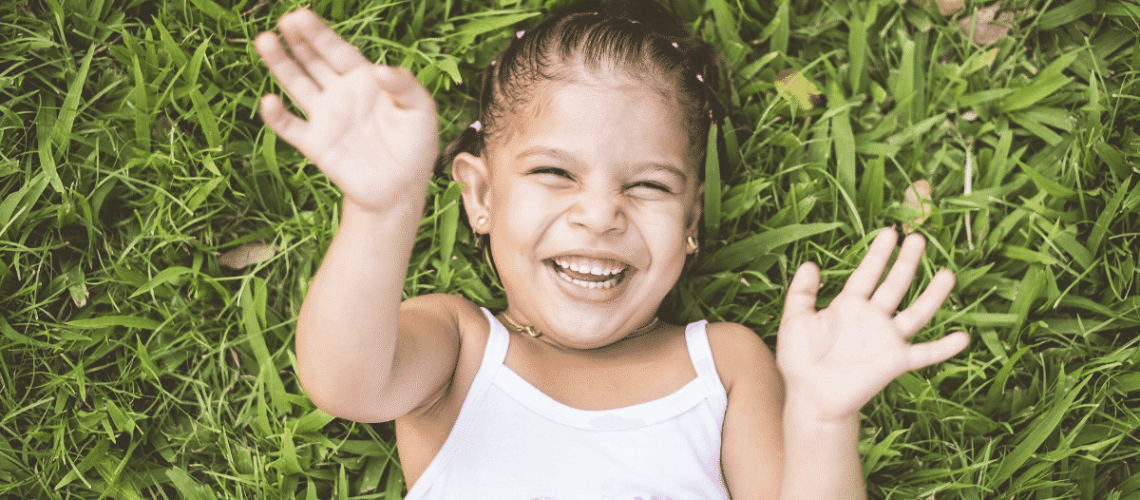Biting! Hitting! Pulling hair! Has your child ever lashed out and hurt someone? Has another aggressive child ever bothered him? If your answer is yes, join the crowd!
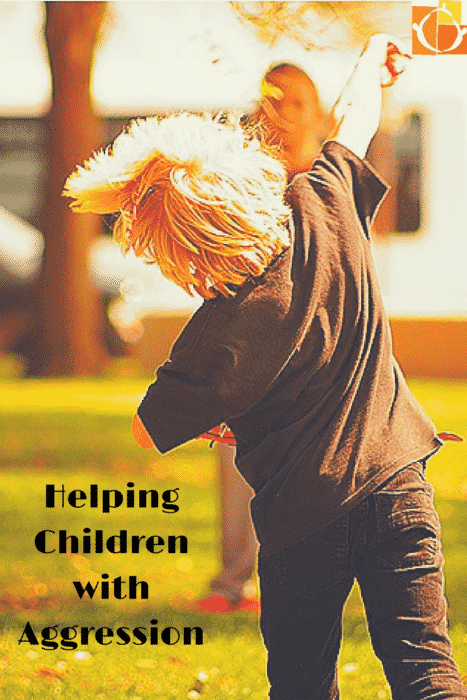 Almost all of us struggle with understanding and helping our children when they hurt others, and when they are hurt by other children.
Almost all of us struggle with understanding and helping our children when they hurt others, and when they are hurt by other children.
It's a shock to us the first time our sweet sons and daughters suddenly bite someone or throw something at the new baby in the family.
First, it's important to understand that children don't want to attack others. They'd much rather have fun and feel safe and loved. They play well when they feel connected.
But when children lose their sense of connection, they feel tense, frightened, or isolated. In this “emotional emergency,” they may lash out at other children. Children don’t intend to be mean. In fact, acts of aggression aren't under the child's control.
For instance, on an ordinary morning at daycare, a child’s inner voice of emotion might be saying:
Mommy's gone. She doesn't like me—she rushed me
out of bed and ordered me to eat my breakfast.
She cooed at the baby, but she doesn’t like me.
I feel awful. Here comes Joey. He looks happy.
How come he gets to feel happy?
The child is loved. She has good parents. But, feeling disconnected and alone, she may lash out.
If a child feels safe, she will show how she feels
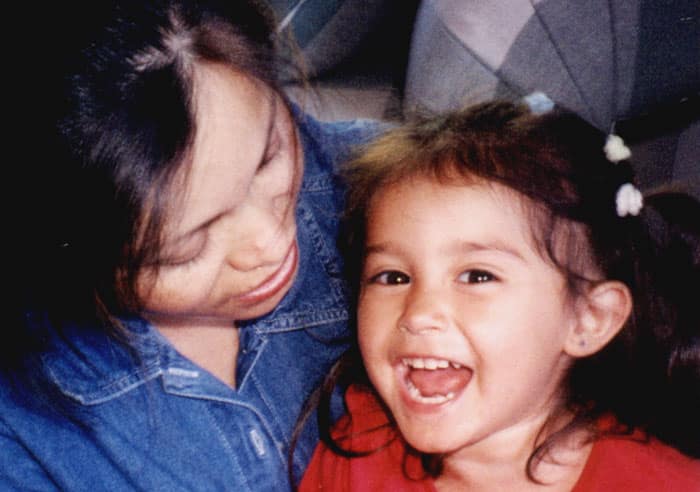
When it feels safe enough to show their feelings, children who feel upset don't hurt anyone. They feel a bond with their parent or caregiver, and run to the nearest loved one for help. They cry, and release the knot of fear and grief they feel. The adult who listens and allows the child to “fall apart” gives the child a huge gift—enough caring and love to allow her to heal from the feelings that make life hard for her.
If a child doesn’t feel safe, she may signal for help by becoming aggressive
The child who lashes out feels sad, frightened, or alone. She doesn't look frightened when she is about to bite, push, or hit. But her fears are at the heart of the problem. Fear robs a child of her ability to feel that she cares about others. Her trusting nature is crusted with feelings: “No one understands me; no one cares about me.” If you watch carefully, you will see that this kind of feeling drains a child's face of flexibility and sparkle in the seconds before she lashes out.
Children get these feelings of isolation, no matter how loving and close we parents are. Some children are only occasionally frightened and aggressive. Other children have an abiding sense of fear and desperation that comes from circumstances beyond anyone's control. Children acquire fears from a difficult birth, medical treatments, family tensions, the unhappiness of others around them, and from the absence of loved ones. Any frightening time in a child’s past can create a tendency toward aggression.
Parents and caregivers have the power to help an aggressive child. A child’s aggression can't be erased by reasoning, Time Out, or enforcing “logical consequences.” The knot of intense feelings inside the child isn’t touched by rewards or punishment. A child’s behavior out of her control, once she begins to feel disconnected.
Here are some simple steps you can follow to help a child who becomes aggressive. These measures will, over time, drain the feelings that cause the aggression, and will help the child feel closer to you and much more flexible in her play with other children.
Know yourself and your child
Ask someone to listen to you while you talk about the feelings you have about the child’s aggression. Hurtful behavior kicks up lots of feelings—fear, anger, guilt—that freeze our warmth and make us react in ways that frighten our child further. Talking to a good listener, and offloading your own feelings, will prepare you to help your child.
Observe. Under what conditions do the child's fears overtake her? Is it when Mommy has been at a meeting the night before? When there have been arguments at home? When other children crowd close? When left to play with a sibling in a separate room? Generally, you can come up with a good guess as to when your child might lose her sense of connection and become aggressive.
Don’t fool yourself. Give up the hope that “this time it might not happen.” Mental preparation is important. If your child bites you suddenly when you're doing rough and tumble play, then every time you play this way, be mentally prepared for biting to occur.
Do a friendly but attentive “patrol” to catch the behavior as it rises
Prepare for aggression by staying close by. Move close enough to be able to reach the child quickly, should aggression begin.
When the expected behavior begins, you need to be close enough to intervene quickly and calmly to prevent a child’s hand from landing in someone's hair, or her teeth from fastening onto you, or her fist from landing on her friend. Because she's not in control of her behavior, she needs you to keep her from hurting someone. You can say something like, “I can't let you hurt Jamal,” or “Oh, no, I don't think I want those teeth any closer.” while holding her forehead a few inches above your shoulder.
Stop the behavior, then Staylisten
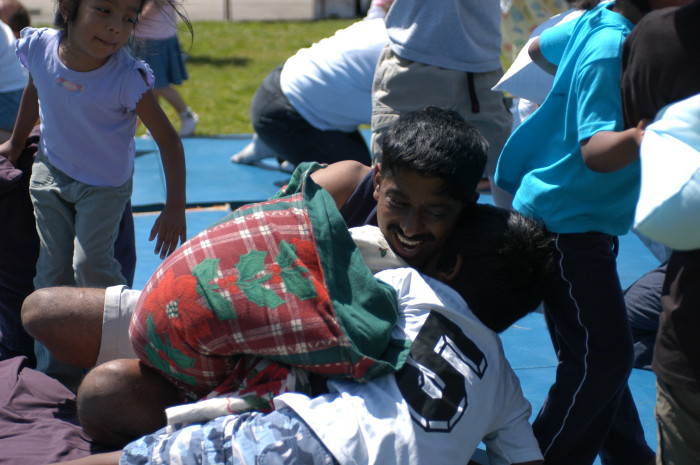
When you have stopped the aggression, connect. Give the upset child eye contact, a warm voice, and kind physical contact. She needs some sign that it's safe to show you her feelings. You can say things like: “I know you don't feel good,” “I'm right here and I'll keep things safe for you,” “It looks like things are hard right now,” “Please tell me about it,” “No one's mad at you,” or, ”I want to stay with you right now.”
The feelings causing the aggression will surface. The crying and fighting a child does will release the hurt that drives her off track. Don't expect your child to be reasonable. She probably won't use words to tell you how she feels. Her body language and tone while crying or screaming will speak to you. Show your caring as you let her writhe with upset. Keep both of you safe by managing her movements when you need to—a hand on her wrist so she can’t grab your glasses, or an arm around her waist so she can’t kick your legs.
While she is offloading feelings, she can’t reason. Don't lecture or explain. Even very young children know right from wrong. But when they are wild with feelings, they can’t listen to their own best thinking, or yours. After the unhappy feelings are gone, children remember, on their own, the important principles you have taught them.
If you arrive too late when children are hitting, decide who to listen to first
If you arrive on the scene too late, more than one child needs your help. Make things safe immediately. Put your hand on the toy soon to be thrown, or open the aggressive child's fingers to release her sister's hair.
Don't blame, shame, or punish. These actions further frighten children, and further isolate them. They add to the load of hurt that makes children aggressive.
Decide who you are going to listen to first. Both the aggressor and the victim need your help. You will be more effective if you concentrate on one child at a time, giving just a moment to the other child. Try to go to the aggressor as often as you go to the victim. Of course, the victim needs someone to check the damage done, and to care. If it's the aggressor you decide to focus on, you can tell the child who was hurt, “I’m sorry. I know that hurt. I'm going to spend a minute here with you. Then I need to see Marla and help her—she must be pretty upset to do this to you.” You might want to try keeping the crying child close to you while you attend to the aggressor child.
Do what you can to lift your child’s feelings of guilt
Understand that children who hurt others feel guilty and even more separate than before. Guilt erases a child’s ability to look like she cares. The “I don't care” look is deceiving—underneath, the child is heartbroken that she became so desperate. It also often prevents children from being able to cry about the feelings that overcame them and caused the aggression. Unless they can cry and fight those feelings away, they will continue to have trouble with aggressive impulses, so your goal needs to be to connect with them. A child who feels connected can heal her fears. A child who doesn’t feel connected can’t.
Make generous contact. It helps children connect if you tell them that you wish you had arrived soon enough to help them. You can say something like, “I'm sorry I didn't see that you were upset with Ginger. It's my job to make sure things are safe. I know you didn't want to hurt her.”
If your child can cry or tantrum at this point, healing has begun. Listen. Sometimes, your presence breaks the crust of isolation and the child’s bad feelings can pour out. The feelings that she expresses are the root cause of the problem. She may feel of anger toward you, or feel suddenly afraid of you touch and closeness. These fearful responses indicate that your child feels safe with you, and trusts you to handle her wildest, scariest feelings. Let her feeling pour out until she reaches a state of calm. She'll decide when she's done enough.
A child who can’t show feelings isn’t bad, she’s lost and isolated
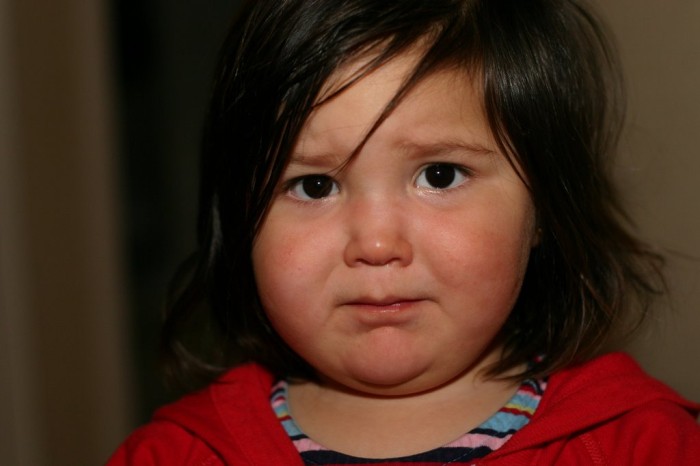
Sometimes, a child who has hurt someone can't feel anything. The feelings of guilt button a child up tight. She doesn't feel safe at all. Your best course of action is to make contact with her by spending some moments—perhaps five or ten—paying attention and doing what she wants to do. This isn't rewarding your child for “bad” behavior. Instead, you are helping your child to reconnect. She has feelings she needs to offload, and in a short while, she will have an upset that gives you another chance to help. She won’t be able to find her favorite toy, or will hate how you cut her toast. The little upset gives her a chance to do the crying she couldn’t do earlier.
Do what you can to encourage closeness and create connection.
Encourage her to come to you when she's upset. Children don't do this easily when they carry a big knot of tension, but offering the idea that you want her to ask for help indicates the direction things will go in over time. After many cries, she will have released some of her fears, and she will be more likely to run to you for help rather than hurt someone when she doesn’t feel connected.
Spend playtime with her and elicit laughter when you can. Connecting with a warm adult in play can be a powerful means of keeping a child’s sense of closeness alive. It's that sense of fun and closeness that will help her stay on a good track with her friends and siblings.
All in all, remember that an aggressive child is a frightened child. Don’t be fooled by the paper-thin crust of behavior that she has adopted to protect her tender heart. Something has happened to frighten her, and she’s managing as best she can. She’s waiting for someone, possibly you, to move in close and ask her what the matter is, to listen, and to tell her she’s a good child even when she feels bad.
If you’re fed up or angered by your child’s aggressive behavior, find someone who can listen to you for a time, without advice or judgment. Talk about what you feel like doing when the aggression starts up. Talk about how aggression was handled in your family growing up. Most of us feel aggressive toward our children when they show aggression toward others. Look for the thoughts that let you laugh, and the thoughts that let you cry. Follow those thoughts, and release the pent-up feelings that make you tense at the times you’re trying to intervene and connect. Sometimes, grabbing your listening partner by the shoulders and giving him or her a good shake, or pounding on the sofa, or otherwise letting your aggressive energy show, can help your feelings release. This listening work will help you stay focused on your child during difficult moments, rather than being carried away by your own tensions.
Here’s how one father helped a child with aggression:
My friend has a six-year-old, Johnny, who has recently become quite aggressive with other children. I’ve known him since he was two weeks old. He has adopted a tough, “I don’t care” attitude. He is verbally demanding, and this scares his mother and puts off other adults. It gets him in trouble in play, isolates him, and has the potential to turn into a chronic bully pattern. Sometimes he’ll yell things like, “Why don’t you just kill me!” which has confused and alarmed his family. I was invited to hang out with him for a weekend. He was happy I was there.
From the moment he woke up Saturday morning he took every opportunity to play hard. We did lots of roughhousing, wrestling, physical contests, races, hide and seek, and time on the trampoline. I tried many Playlistening strategies. I bungled my way through various games, in which he “got the best of me.” He laughed a lot. We made a good connection. Then he asked that we invite a younger neighbor friend to hang out with us. We explored the neighborhood, and ended up at a local schoolyard. He and his friend tried hard to kill some squirrels by throwing rocks at them. They laughed. I worried about the squirrels, but took the chance that they would be OK, and didn’t set limits there. The squirrels were faster than the boys.
Later, Johnny began to be bossier as he played with his younger friend. He began to show his “tough guy” behavior. Tension mounted between the boys. The younger one protested, gave in to some of Johnny’s demands, but became less and less cooperative. Finally I went over, put my arm around Johnny, and told him I wasn’t going to let him act that way. I told him that he couldn’t continue his yelling, screaming, and bullying. I knew the way he was acting did not reflect his family’s values. “That’s not a way we interact with others” was what I communicated. He protested, wanted to leave, and was upset with me. I told him I wanted him to stay with me. I reminded him that I really liked him a lot. I put my arms around him. He began to fight me, and eventually, to cry.
While he was crying, I said, “Johnny, I know you. I know you didn’t used to talk that way to other kids. I know you didn’t used to fight with them like that. I’ve never seen you act like that. What happened to make you choose to act like that?” He cried really hard for a long time, and kept fighting. I had my arms loosely around him—he would have run away otherwise. I encouraged him to push hard, to fight, and kept telling him that it was great he could use the resistance I was offering to work hard on these feelings. I kept asking every now and then, “What happened?” He kept saying, “I want my mom (who had come and was sitting close by) to hold me!” After awhile, he said emphatically, as he burst into tears, “I’m not going to tell you! Let go of me!” I responded, “Not just yet.” I stayed and listened some more—we were getting to the bottom of something. I kept gently asking what had happened, and he kept crying hard.
Another boy had been hard on him in exactly the way he was treating his friends, and had hit him in the face. He hadn’t been able to fight for himself. He cried more, very close to me. Long hard sobs of grief came out. It ended well.
Then he finally told me the incident that had frightened and hurt him. Another boy had been hard on him in exactly the way he was treating his friends and had hit him in the face. He hadn’t been able to fight for himself. He cried more, very close to me. Long hard sobs of grief came out. It ended well. He has been softer since then. Later that evening while out with another family, another young friend had big feelings about wanting his mom to take him home “right now!” Johnny was very supportive while the young friend was crying and protesting. He was very sweet and reassuring to this young one. I think he has more crying to do before he can be entirely free of the feelings that make him act tough. But we did a good bit.
—a father in Albuquerque, New Mexico
